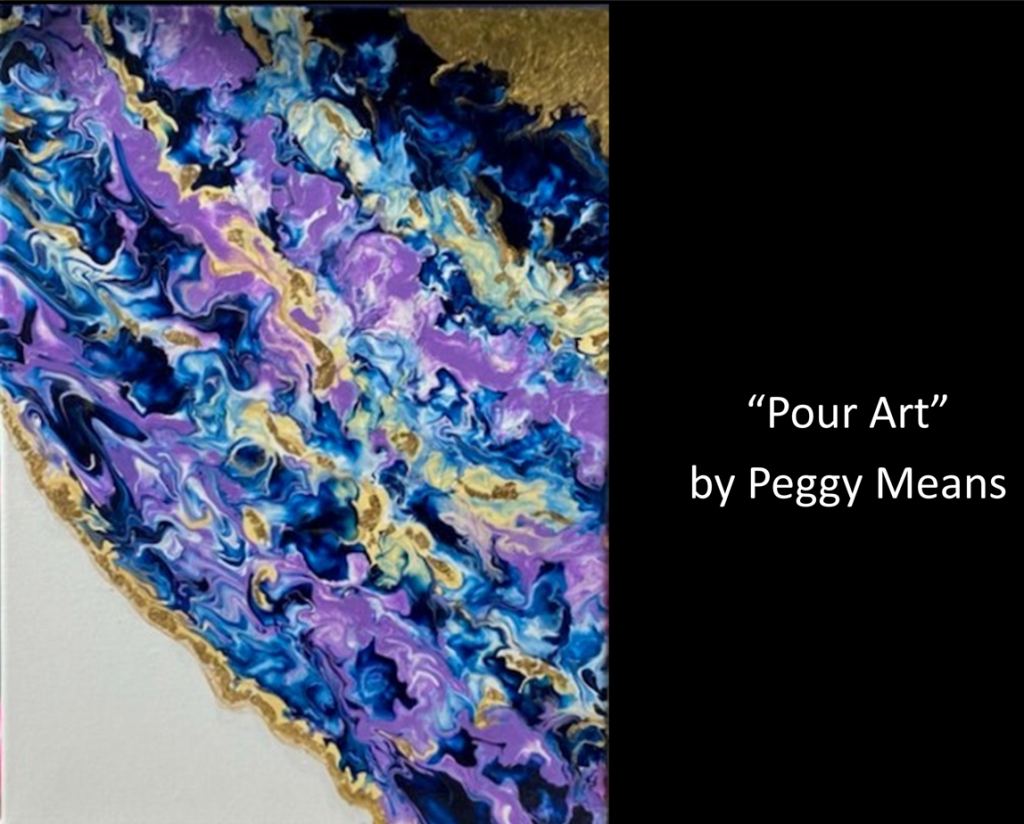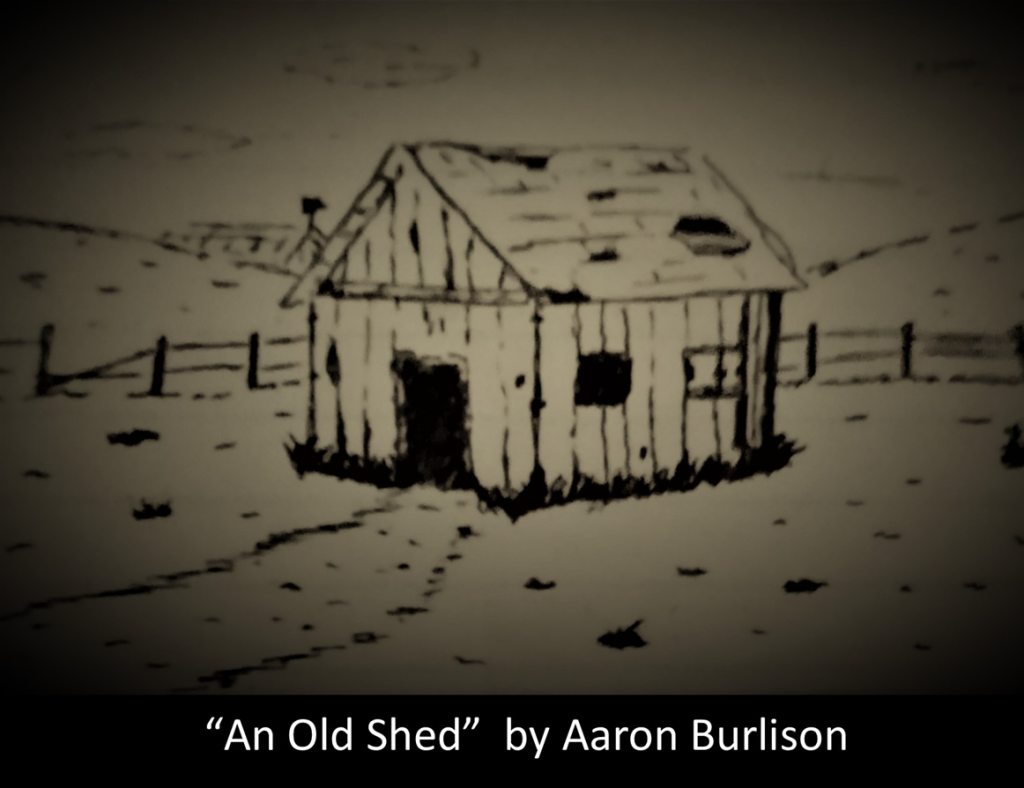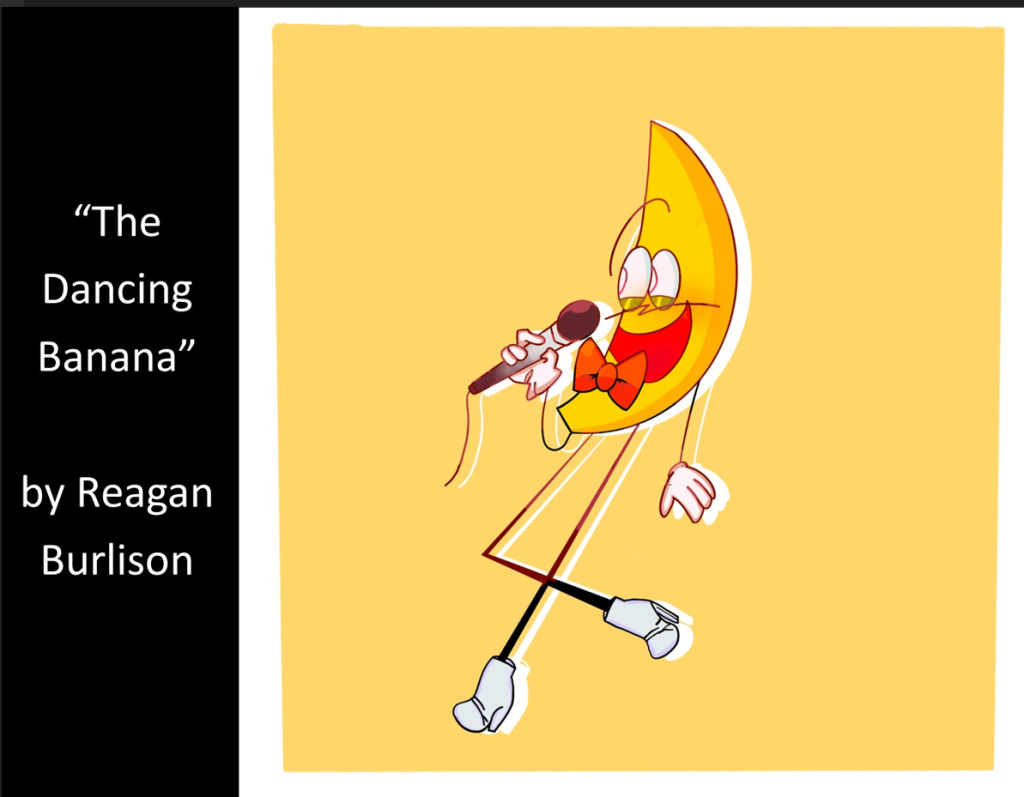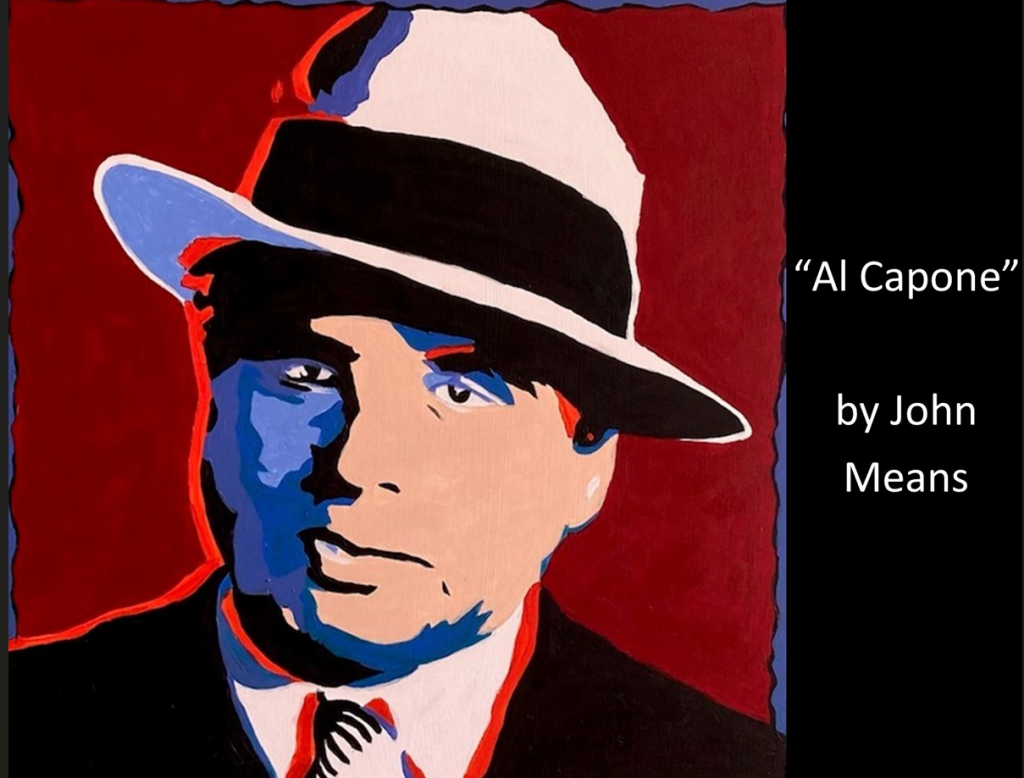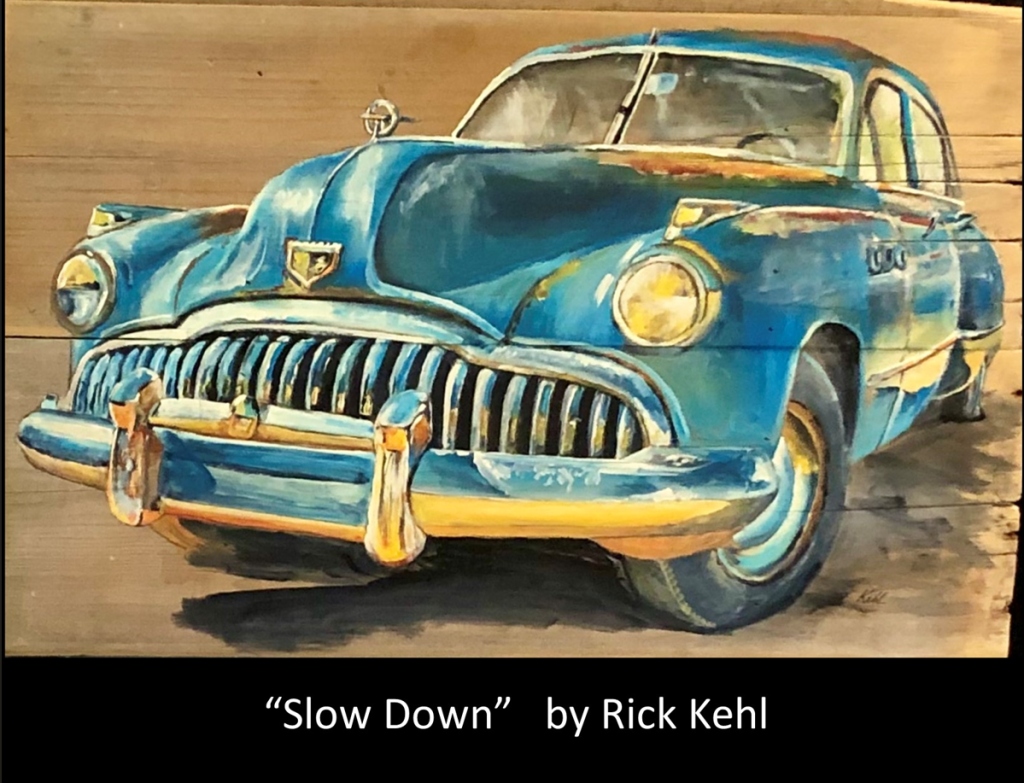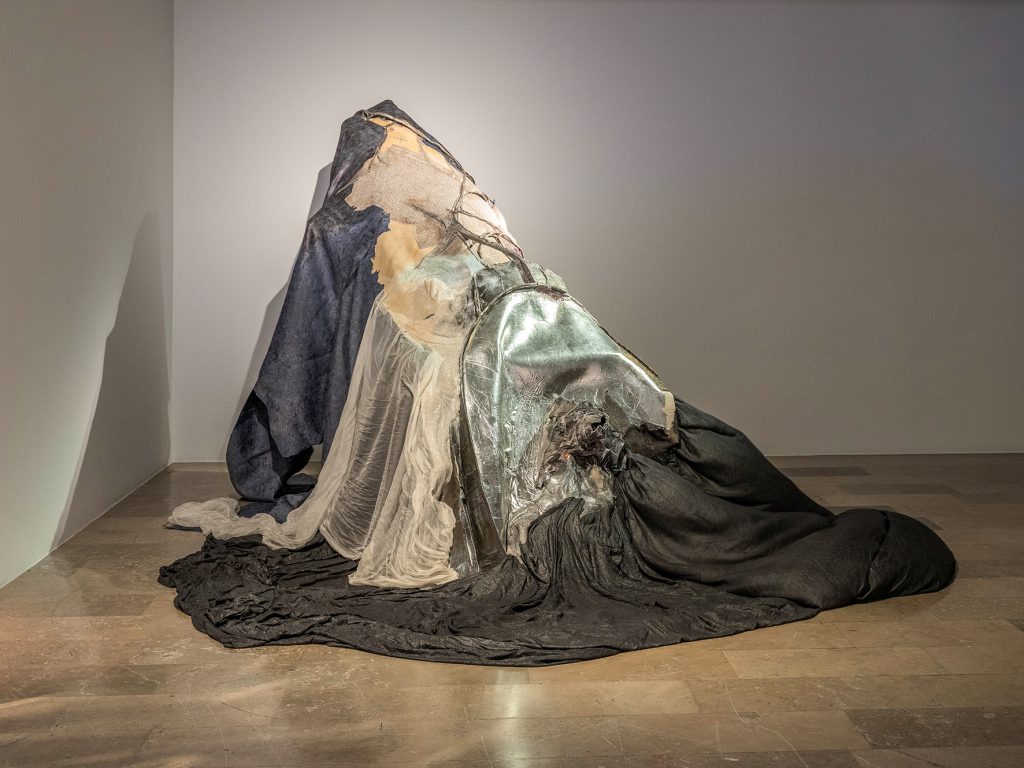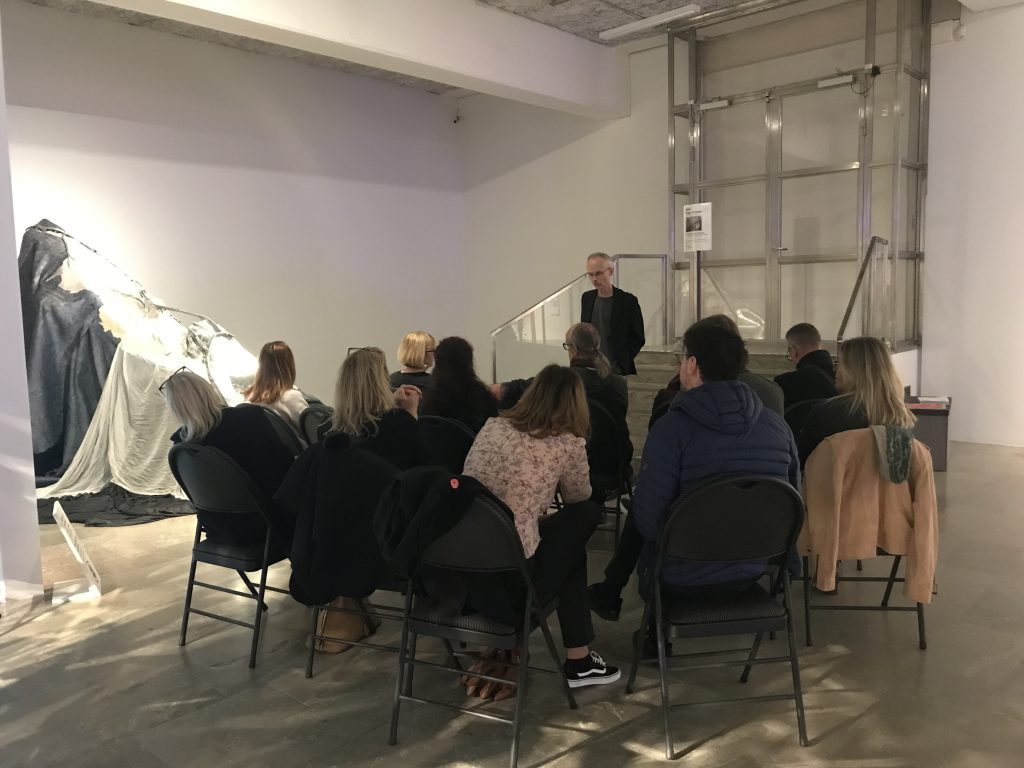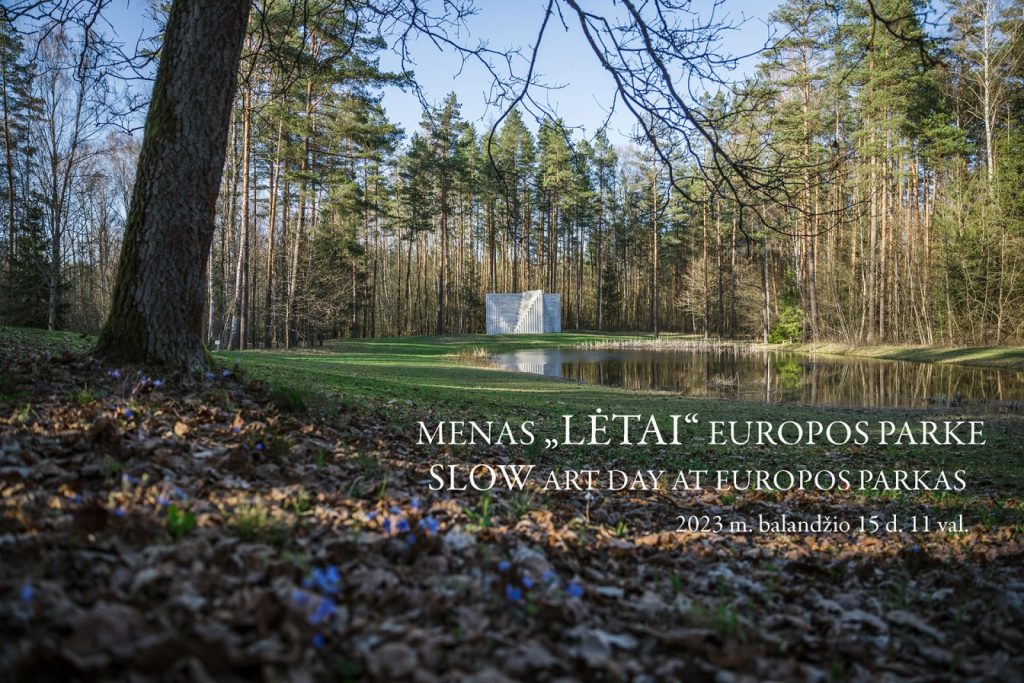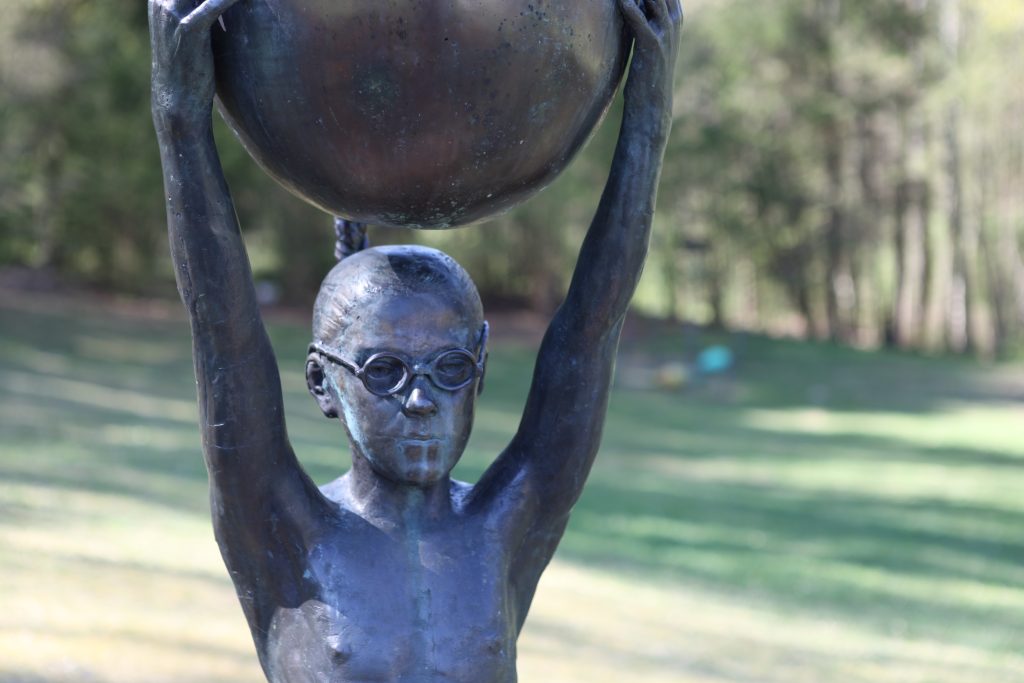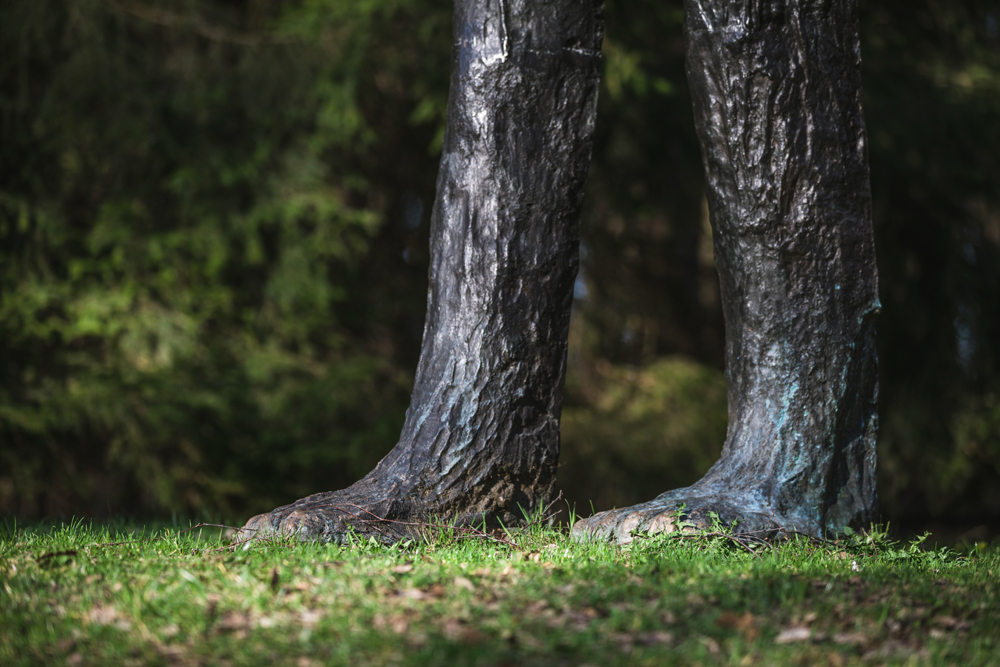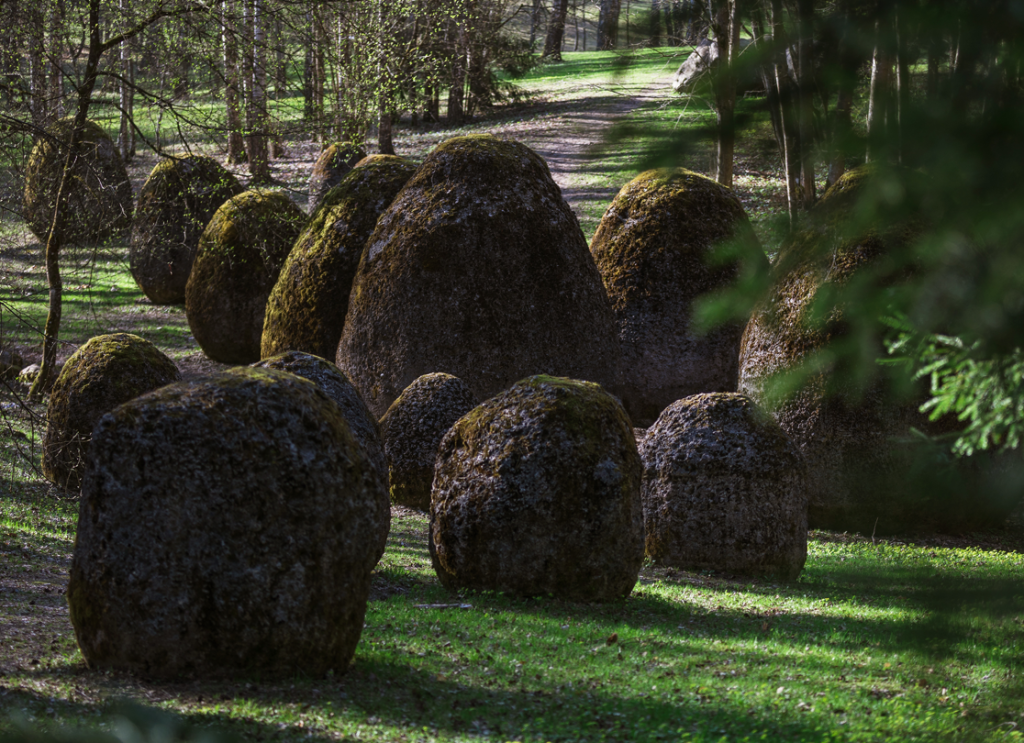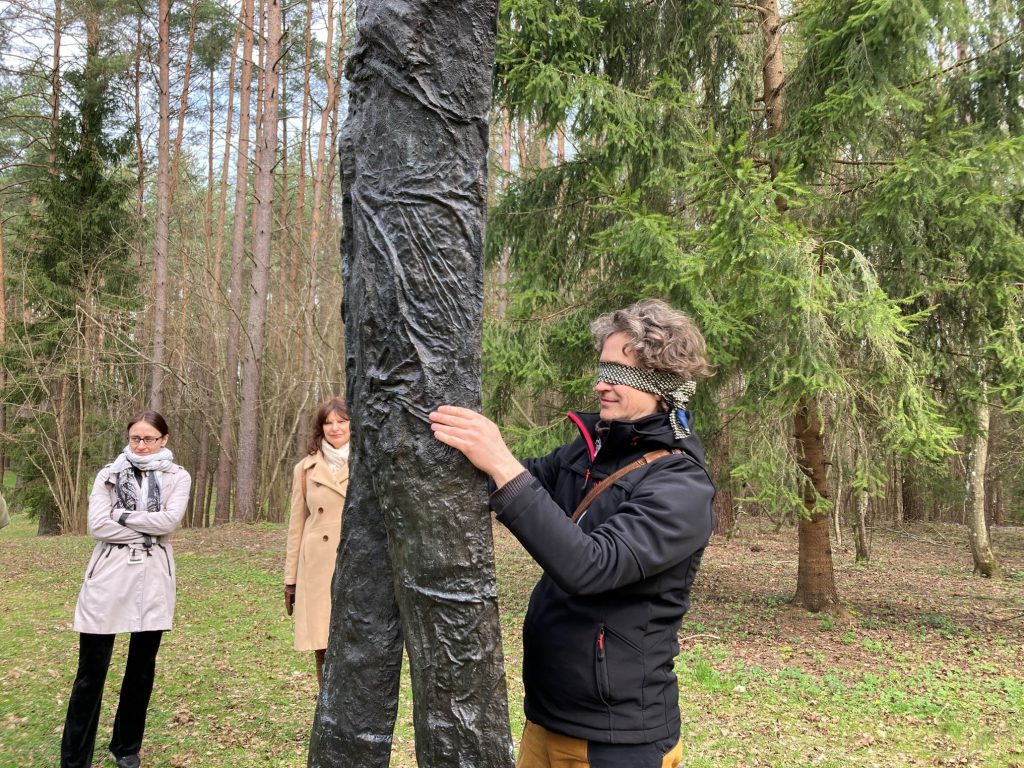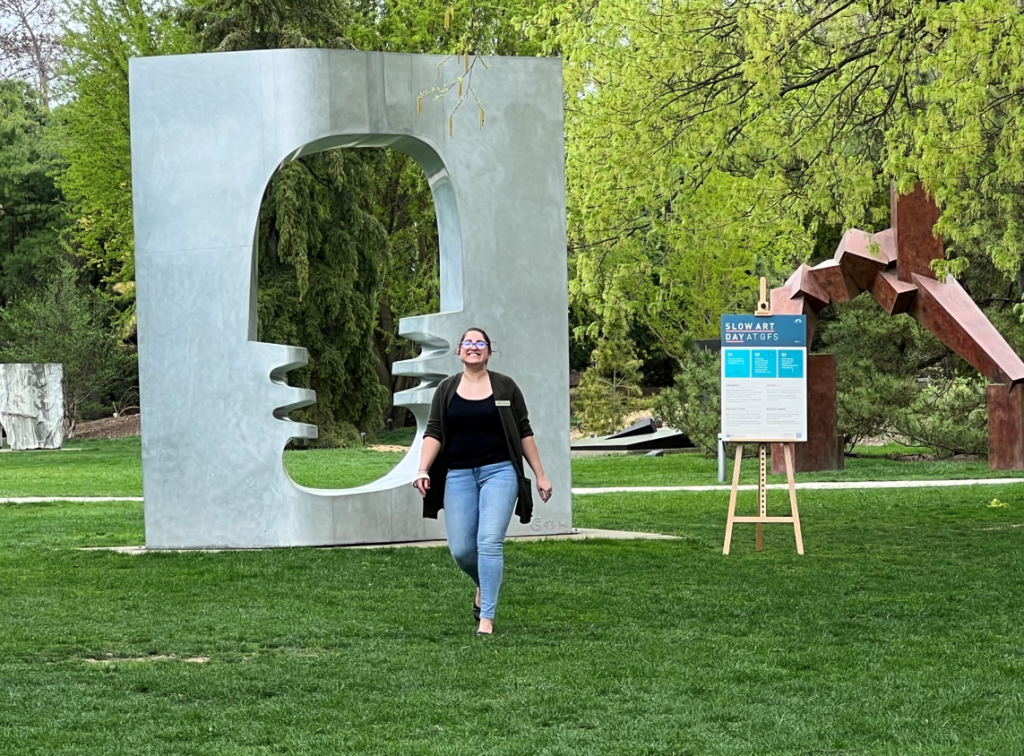The National Gallery of Canada in Ottawa, one of the largest museums in North America, hosted its first Slow Art Day in 2023, with a simple design: participants were invited to look slowly at art in two rooms of the gallery before discussing their experiences together.


On April 15, educator Andrea Gumpert and interpreter Valérie Mercier greeted English and French speaking participants in the Great Hall. After a quick grounding exercise and a collective slow looking warm up, participants were taken to two different galleries for their slow looking. They were given a few prompts to keep in mind during each session, including choosing to read or ignore the artwork labels.
Participants were first invited to select a piece in a gallery with only figurative works (Indigenous and Canadian Galleries – A110). They spent 10 minutes looking at their chosen artworks before sharing thoughts.
This was repeated for 15 minutes in a different gallery with a variety of figurative and abstract paintings
and Inuit sculptures (Indigenous and Canadian Galleries – A112). After the second session, participants compared experiences from each gallery.
In the sharing sessions, participants remarked that their impressions of the works grew more nuanced as they spent time with them. Some found themselves asking questions about painting techniques or of the artist’s life. Two participants in the French speaking group requested to spend time with Riopelle’s Pavane, and enjoyed the exchange so much that they decided to lunch together afterwards despite not knowing each other beforehand.
In addition to the public group experience, the Gallery also suggested that participants participate on their own or watch the guided slow look of Rembrandt’s Heroine via a video produced by the museum. Several people on social media commented positively about Slow Art Day, and others wrote to the Gallery asking if the exercise would be repeated. A few staff also suggested the approach be offered on an ongoing basis.
The slow looking event was first tested in staff sessions at the Gallery in March prior to the public event in April. Andrea and Valérie ran the program with staff to 1) offer a team building exercise, and 2) test their approach and work out any kinks ahead of the public program. The staff loved it and later answered a survey, including this note from Dina Groulx, Corporate Relations Officer:
Dina Groulx, Corporate Relations Officer
I genuinely enjoyed every minute of the tour […]. What a treat it was for me to have experienced that.
As a remote employee, it felt very impactful. I really wasn’t sure what to expect when I signed up, but I
was so glad to have invested time out of my day for myself. I also thought of how lucky I was as an
employee to have had access to the quietness of the space (most of the time) and I realized that as
the pilot took place on Monday, it created a calm retreat experience. It was so nice to go through that
experience with colleagues outside of my regular work and made connections with them and with the
art in a way that I had never experienced before.
Taking inspiration from the National Gallery of Canada, we strongly recommend that other museums and galleries imitate what they have done and run slow looking sessions with their staff.
Note that the National Gallery of Canada also ran an effective marketing campaign. Their Slow Art Day event was featured in an article by Chelsea Osmond in the National Gallery of Canada Magazine and advertised on local radio stations. The Gallery also promoted the event via social media posts and in their monthly newsletter.
We are so glad the National Gallery of Canada has joined the Slow Art Day movement, and we look forward to the creative design they come up with for 2024.
-Johanna, Ashley, Jessica Jane, and Phyl
P.S. Take a look at these concluding remarks from educator Andrea Gumpert:
Andrea Gumpert, educator at the National Gallery of Canada
“Participation in the Slow Art Day requires little preparation, links the Gallery to a broader global movement and aligns directly with the Strategic Plan. The approach also benefits visitors by reported reduction in stress levels, improved concentration levels and a better ability to foster empathy. As the participants in the Gallery’s Slow Art Day expressed, slow and careful looking helps to unravel complexity, build connections and see things from multiple perspectives. Finally, since slow looking is inclusive: everyone can take part and no prior knowledge is required. For those who want to practice slow looking with art, no art historical knowledge is required giving confidence in one’s own abilities to visit a museum and to understand works of art for oneself. The Gallery is ideally placed to continue the annual Slow Art Day event and might consider further opportunities to host slow looking programs for the public as well as the staff.”










